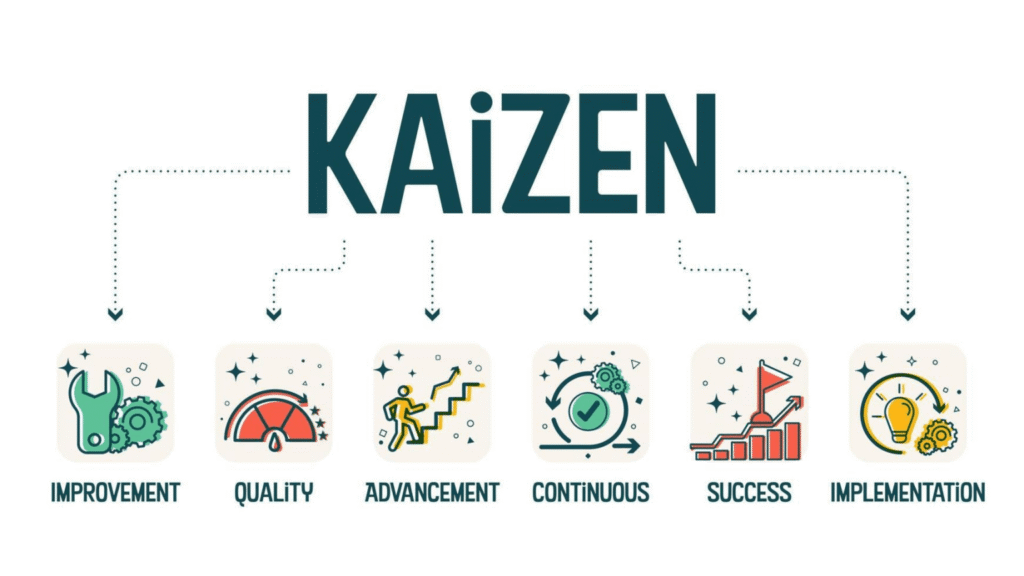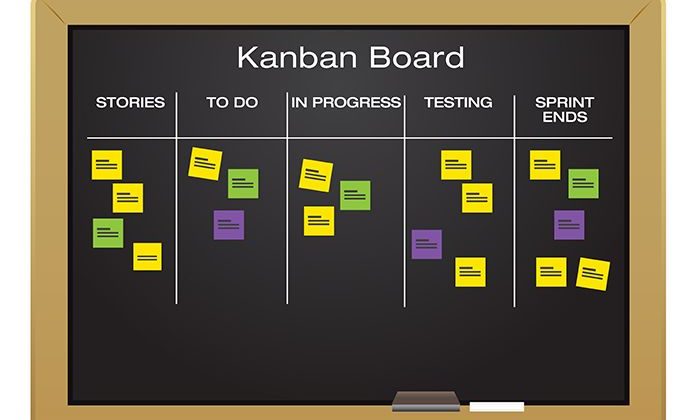
Kaizen: How Small Daily Changes Create Big Life Results

What is Kaizen?
Kaizen is a Japanese word that means “change for the better” or “continuous improvement.” It’s a simple but powerful idea: instead of making big, dramatic changes all at once, you make tiny improvements every single day.
Think of it like this – if you want to climb a mountain, you don’t try to jump to the top. You take one small step, then another, then another. Before you know it, you’ve reached the summit.
Where Did Kaizen Come From?
Kaizen started in Japan after World War II. Japanese companies like Toyota used this approach to rebuild and improve their businesses. Instead of waiting for perfect solutions, they encouraged all workers – from the factory floor to the boardroom – to suggest small improvements every day.
The results were amazing. These companies became some of the most successful in the world, and kaizen spread to businesses everywhere.
How Does Kaizen Work?
The beauty of kaizen is in its simplicity. Here’s how it works:
Start Small: Make changes so tiny that they’re almost impossible to fail at. Want to exercise more? Start with just 2 minutes a day, not 2 hours.
Be Consistent: Do your small improvement every day. Consistency beats intensity every time.
Focus on Progress, Not Perfection: You’re not trying to be perfect right away. You’re just trying to be 1% better than yesterday.
Celebrate Small Wins: Notice and appreciate every little improvement. This keeps you motivated to continue.
Real-Life Examples
At Work: A cashier notices customers waiting too long in line. Instead of redesigning the whole store, they suggest moving the receipt paper closer to save 10 seconds per customer. Small change, big impact.
At Home: You want to read more books but feel overwhelmed. Instead of trying to read for hours, you read just one page before bed each night. After a year, you’ve read several books.
Personal Health: Rather than starting an extreme diet, you replace one soda with water each day. It’s such a small change that it doesn’t feel like a sacrifice, but over time it makes a real difference.
Learning: Want to learn Spanish? Instead of studying for hours on weekends, you learn just 5 new words every day. In a year, that’s over 1,800 words.
Why Kaizen Works So Well
It’s Not Scary: Big changes feel overwhelming and make us want to quit. Small changes feel manageable and safe.
It Builds Habits: When changes are tiny, they’re easier to stick with until they become automatic habits.
It Adds Up: Small improvements compound over time. A 1% improvement every day means you’re 37 times better after one year.
Anyone Can Do It: You don’t need special skills, lots of money, or perfect conditions. You just need to start where you are.
It Reduces Resistance: Our brains fight against big changes but accept small ones. Kaizen works with your natural psychology, not against it.
How to Use Kaizen in Your Life
Pick One Area: Don’t try to improve everything at once. Choose one thing that matters to you – your health, work, relationships, or a hobby.
Make It Ridiculously Small: If you want to exercise, start with 5 push-ups. Want to save money? Start by saving just $1 a day. The key is making it so small you can’t say no.
Do It Every Day: Consistency is everything. It’s better to do something tiny every day than something big once a week.
Track Your Progress: Write down what you did each day. Seeing your streak of improvements will motivate you to keep going.
Be Patient: Kaizen is not about quick fixes. It’s about long-term growth. Trust the process and give it time to work.
Common Mistakes to Avoid
Starting Too Big: If your improvement feels difficult or requires willpower, it’s too big. Make it smaller.
Trying to Change Everything: Focus on one thing at a time. Once it becomes a habit, you can add something new.
Giving Up Too Soon: Results take time to show. Stick with your small changes for at least a month before judging if they’re working.
Comparing to Others: Your kaizen journey is personal. Don’t worry about how fast others are improving.
The Magic of Kaizen
The real magic of kaizen isn’t just in the results you get – though those can be incredible. It’s in how it changes the way you think about improvement and challenges.
Instead of feeling overwhelmed by big goals, you start seeing them as a series of small, manageable steps. Instead of waiting for the “perfect time” to start, you begin right now with something tiny.
Kaizen teaches you that you don’t have to be great to get started, but you have to get started to be great.
Getting Started Today
You don’t need to wait until Monday or next month to begin using kaizen. You can start right now, today, with something incredibly small.
Pick one tiny thing you can improve today. Maybe it’s drinking one extra glass of water, writing down one thing you’re grateful for, or organizing just one drawer in your house.
Do that one small thing. Tomorrow, do it again. Keep going, and watch as these tiny changes create amazing results in your life.
Remember: small changes, done consistently, lead to big transformations. That’s the power of kaizen.
















Post Comment